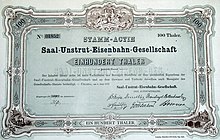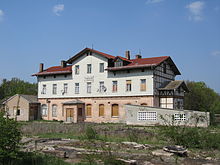Straussfurt – Großheringen railway line
| Straussfurt - large herring | |||||||||||||||||||||||||||||||||||||||||||||||||||||||||||||||||||||||||||||||||||||||||||||||||||||||||||||||||||||||||||||||||||||||||||||||||
|---|---|---|---|---|---|---|---|---|---|---|---|---|---|---|---|---|---|---|---|---|---|---|---|---|---|---|---|---|---|---|---|---|---|---|---|---|---|---|---|---|---|---|---|---|---|---|---|---|---|---|---|---|---|---|---|---|---|---|---|---|---|---|---|---|---|---|---|---|---|---|---|---|---|---|---|---|---|---|---|---|---|---|---|---|---|---|---|---|---|---|---|---|---|---|---|---|---|---|---|---|---|---|---|---|---|---|---|---|---|---|---|---|---|---|---|---|---|---|---|---|---|---|---|---|---|---|---|---|---|---|---|---|---|---|---|---|---|---|---|---|---|---|---|---|---|
| Route number : | 6721 | ||||||||||||||||||||||||||||||||||||||||||||||||||||||||||||||||||||||||||||||||||||||||||||||||||||||||||||||||||||||||||||||||||||||||||||||||
| Course book section (DB) : | 594 | ||||||||||||||||||||||||||||||||||||||||||||||||||||||||||||||||||||||||||||||||||||||||||||||||||||||||||||||||||||||||||||||||||||||||||||||||
| Route length: | 52.770 km | ||||||||||||||||||||||||||||||||||||||||||||||||||||||||||||||||||||||||||||||||||||||||||||||||||||||||||||||||||||||||||||||||||||||||||||||||
| Gauge : | 1435 mm ( standard gauge ) | ||||||||||||||||||||||||||||||||||||||||||||||||||||||||||||||||||||||||||||||||||||||||||||||||||||||||||||||||||||||||||||||||||||||||||||||||
| Top speed: | 80 km / h | ||||||||||||||||||||||||||||||||||||||||||||||||||||||||||||||||||||||||||||||||||||||||||||||||||||||||||||||||||||||||||||||||||||||||||||||||
|
|||||||||||||||||||||||||||||||||||||||||||||||||||||||||||||||||||||||||||||||||||||||||||||||||||||||||||||||||||||||||||||||||||||||||||||||||
The Straussfurt – Großheringen railway line (also known as Pfefferminzbahn or Pfeffibahn ) is a branch line in Thuringia and Saxony-Anhalt that was originally built by the Saal-Unstrut-Eisenbahn-Gesellschaft (SUE). It leads from Straussfurt via Sömmerda and Kölleda to the Großheringen railway junction .
Name of the route
When the route was founded, Kölleda was a center of herb cultivation. Among other things , the railway line was built to transport peppermint .
history
With the conclusion of a state treaty of July 31, 1870, Prussia and the Grand Duchy of Saxony-Weimar-Eisenach created the conditions for the construction of the Saal-Unstrut Railway. The Saal-Unstrut-Eisenbahn-Gesellschaft , founded in Kölleda in the same year , received the Prussian license to build the railway on March 9th, 1872, the Grand Duchy license followed on April 11th, 1872. However, the 53-kilometer single-track standard-gauge line was only opened on the 14th Opened August 1874.
The tight financial resources of the company did not allow the purchase of the necessary rolling stock, so that on July 1, 1874 the neighboring Nordhausen-Erfurt Railway Company was contractually commissioned to run the route and to manage the Saal-Unstrut-Eisenbahn- To take over society. By excessive construction costs, which had settled the general contractor of the company, and in 1873 by the "railway king" Strousberg ending with caused and around 20 years of founder crisis could not be avoided a collapse of SUE in 1877th After the bankruptcy was closed, the railway was transferred to the Nordhausen-Erfurt Railway Company on January 1, 1882, and was nationalized with the latter in 1887 by the Prussian State Railways .
The route infrastructure has been leased from DB Netz AG to Thüringer Eisenbahn GmbH since 2005 . The trains initially continued to run by DB Regio Südost . In the years 2005 to 2006, the part of the Pfefferminzbahn east of Sömmerda was modernized and upgraded for a speed of 80 km / h, the stations Eckartsberga and Olbersleben-Ellersleben were expanded to train stations with fallback switches for train crossings . In this section, then reversed diesel railcars of the 641 series . On December 9, 2007, passenger traffic on the western section between Straussfurt and Sömmerda was discontinued and the Weißensee station was no longer served by passenger traffic.
In July 2015, there was a temporary suspension of passenger services due to an acute shortage of train drivers at DB Regio. Since the class 641 railcars were used for other routes, class 642 railcars operated until the operator change in 2017 .
The local transport service company Thuringia, as the responsible authority , started the tender for passenger transport between Sömmerda and Buttstädt for the period from December 2017 to 2024 in December 2015. The contract for the only eight train pairs, nine on weekdays, was awarded to the Erfurt Railway , which runs with diesel multiple units of the Regio type -Shuttle had offered. Passenger traffic between Buttstädt and the Großheringen junction was suspended with the timetable change in December 2017 due to a lack of funds and low occupancy. A petition to the Thuringian state parliament to maintain the peppermint railway and better connections to Jena in 2017 received around 3,000 signatures. Since the shortening does not save staff on the signal boxes or route maintenance measures, the infrastructure operator Thuringian Railway compensates for the loss of income by almost doubling the track prices from around 8 to 15 euros per kilometer for passenger trains.
From January 8, 2018, the Erfurter Bahnservice ran a locomotive-hauled passenger train between Buttstädt and Sömmerda from Monday to Friday. The offer was discontinued on March 2, 2018 because financial support for the compressor services from the Free State of Thuringia was not in prospect. On March 31, 2018, the non-profit association "Pfefferminzbahn" was founded in Buttstädt. As a result of a passenger survey, an additional train was ordered in the afternoon between 3 and 5 p.m. from August 13th.
Route description
The route leads from Straussfurt on the Wolkramshausen – Erfurt railway via Sömmerda and Kölleda on the southern edge of the Schmücke and Finne ridges to the Großheringen railway junction . Here it meets the Halle – Bebra line, opened in 1846 by the Thuringian Railway Company , and the Saalbahn to Saalfeld .
In Sömmerda, the Sangerhausen – Erfurt railway line, opened on October 1, 1879 by the Magdeburg-Halberstädter Railway Company , crosses . From 1891 there was a connection in Buttstädt with the narrow-gauge Weimar-Rastenberger railway , which crossed the peppermint railway in Guthmannshausen; it later belonged to the central administration for Secundairbahnen Herrmann Bachstein . In 1914, the Prussian State Railway opened the Laucha – Kölleda line in three sections . The new Erfurt – Leipzig / Halle line crosses the Pfefferminzbahn to the west of Buttstädt .
The peppermint railway begins and ends in Thuringia. The state border with Saxony-Anhalt is crossed between Buttstädt and Tromsdorf . Directly in front of the Eckartsberga train station , the route leads back to Thuringia.
passenger traffic
- 1880: three pairs of trains a day, travel time around 2 hours and 54 minutes
- 1913: seven pairs of trains a day, travel time around 2 hours and 14 minutes
- 1936: six pairs of trains a day, travel time around 1 hour and 50 minutes
- 2006: eight pairs of trains every day, every two hours, travel time around 1 hour and 29 minutes
- 2007: Thirteen pairs of trains every two hours with repeater trips, travel time around 1 hour and 24 minutes
- 2007: Suspension of passenger traffic on the Straussfurt – Sömmerda section when the timetable changes on December 9th
- 2009: Ten continuous pairs of trains from Sömmerda to Großheringen with crossing in Olbersleben every two hours with repeater trains, travel time 50 minutes
- 2017: eight, nine on weekdays, train pairs Sömmerda – Buttstädt, travel time 25 or 26 minutes, passenger traffic between Buttstädt – Großheringen is discontinued
Only one railcar is required for the current operation of the route in passenger traffic, so that no scheduled crossings with other passenger trains are planned. The turning time in Sömmerda is 11 minutes, in Buttstädt 58 minutes.
On May 1st, 2018 the Förderverein Finnebahn eV (FFB) carried out the first special trip under the name "Finne-Unstrut-Xpress" (FUX) on the occasion of the Freyburg Wine Spring, which led from Sömmerda via Buttstädt into the Unstruttal.
literature
- The development of the German Railways 1835–1935 . Deutsche Reichsbahn, Berlin 1935;
- Paul Lauerwald: The Peppermint and Finnebahn Straußfurt-Kölleda-Laucha / Großheringen , Wesseling 1997, ISBN 3-9804798-3-8 .
- Paul Lauerwald: Straussfurt - Sömmerda - Großheringen. In: Secondary and narrow-gauge railways in Germany then & now . 102. Supplementary delivery , Munich 2013, 18 p. DIN A 4, ISSN 0949-2143 ;
Web links
- Route, operating points and some permitted speeds on the OpenRailwayMap
- History of the peppermint train ( Memento from December 31, 2010 in the Internet Archive )
- Pictures from the train stations (2010) ( Memento from March 18, 2012 in the Internet Archive )
- Cab ride in October 2013
- Petition to continue the peppermint train
Remarks
- ↑ DB Regio canceled passenger traffic on the Pfeffibahn between Sömmerda and Großheringen this week. In: Thuringian General. July 15, 2015, accessed August 8, 2015 .
- ↑ Announcement of the tender for the local rail transport on the Pfefferminzbahn
- ↑ Award of contract for peppermint train. Erfurter Bahn, 23 September 2016, accessed on 27 September 2016 .
- ↑ Draft timetable 2018 of the NVS. (No longer available online.) Nahverkehrsservicegesellschaft Thuringia, archived from the original on April 5, 2017 ; accessed on February 8, 2017 .
- ^ Weimarer Land: collected around 3,000 signatures for the peppermint train. (No longer available online.) MDR Thuringia, June 26, 2017, archived from the original on June 28, 2017 ; accessed on June 30, 2017 .
- ↑ http://www.thueringer-eisenbahn.de/TAP_18.pdf Track and system price list of the ThE from December 10th, 2017 (subject to approval), accessed on September 18, 2017
- ^ Thuringia: Passenger train hauled by a locomotive on the peppermint railway. In: lok-report.de. January 8, 2018, accessed January 8, 2018 .
- ↑ With cameras on the train and balloons on the platform. In: Thuringian General. March 6, 2018, accessed June 17, 2018 .
- ↑ Association is founded. In: Thuringian General. March 31, 2018, accessed June 17, 2018 .
- ^ Armin Burghardt: More traffic on the peppermint railway. In: Thuringian General . July 31, 2018, accessed August 20, 2018 .
- ↑ More trains during rush hour on the Sömmerda-Buttstädt Pfefferminzbahn are planned from August. Thuringian Ministry of Infrastructure and Agriculture, July 6, 2018, accessed on November 15, 2018 .
- ↑ Timetable EB 27 Sömmerda – Buttstädt. Retrieved December 11, 2017 .
- ↑ With the FUX into the vineyards. In: Thuringian General. April 13, 2018, accessed May 16, 2018 .



